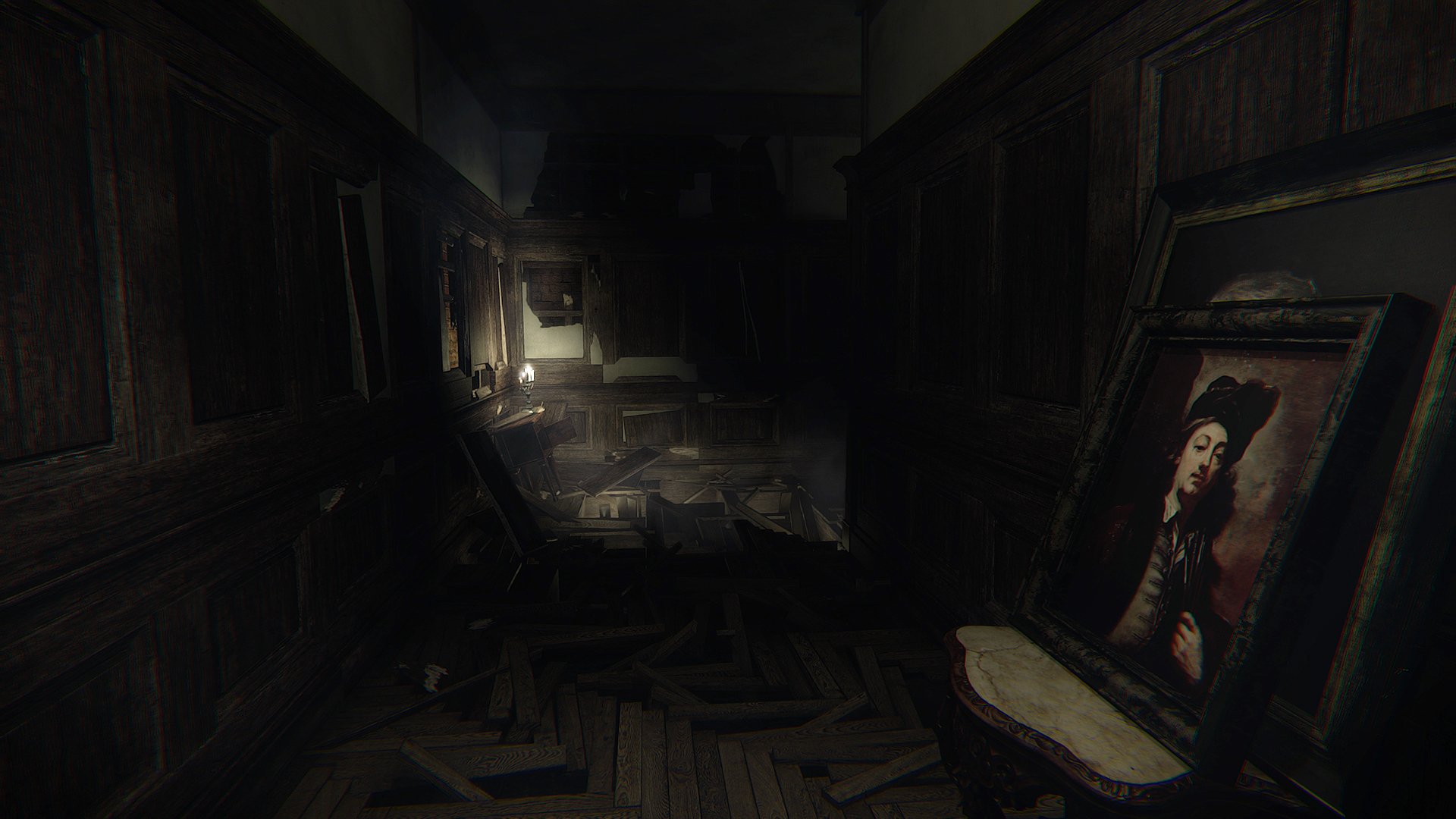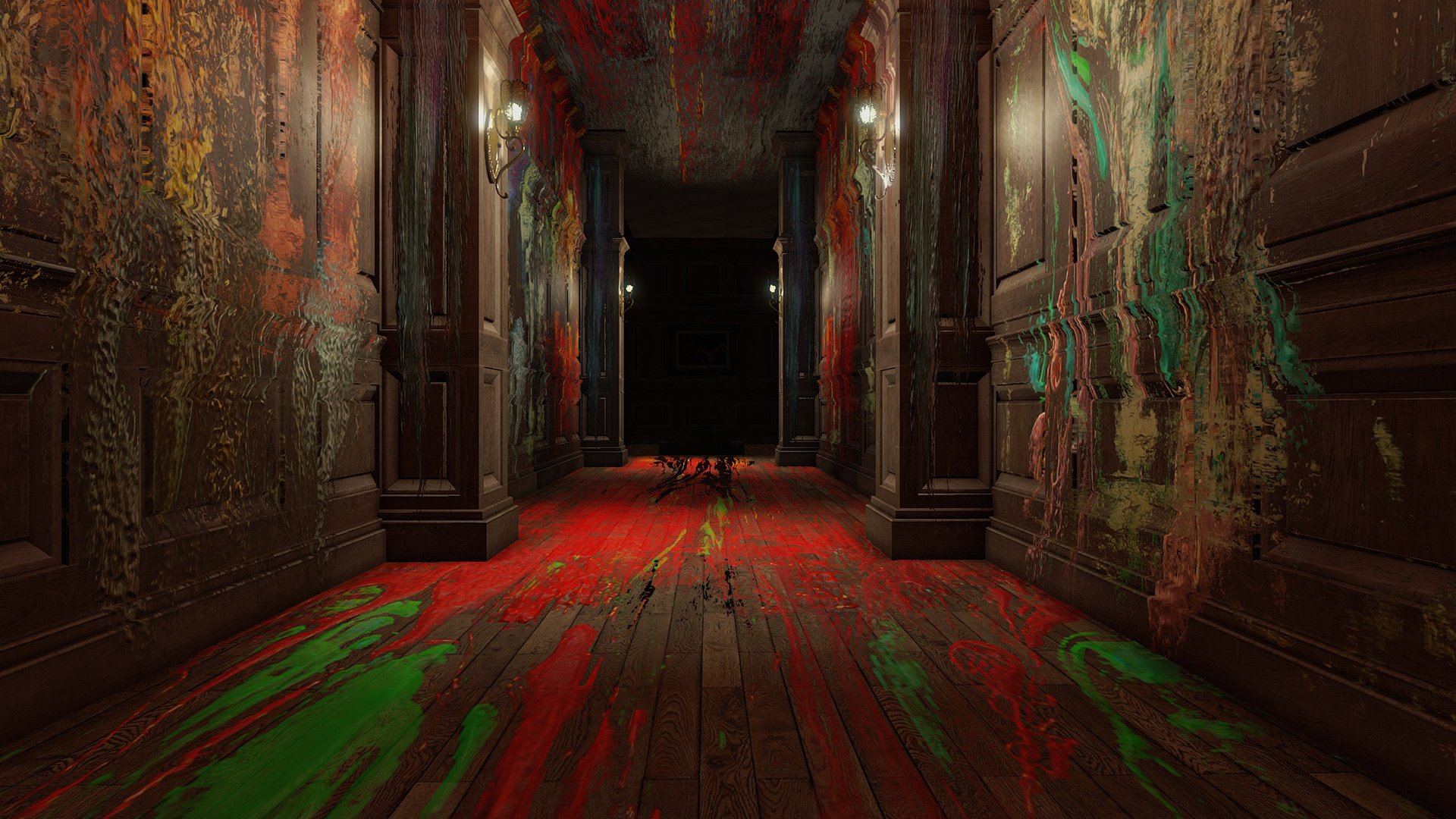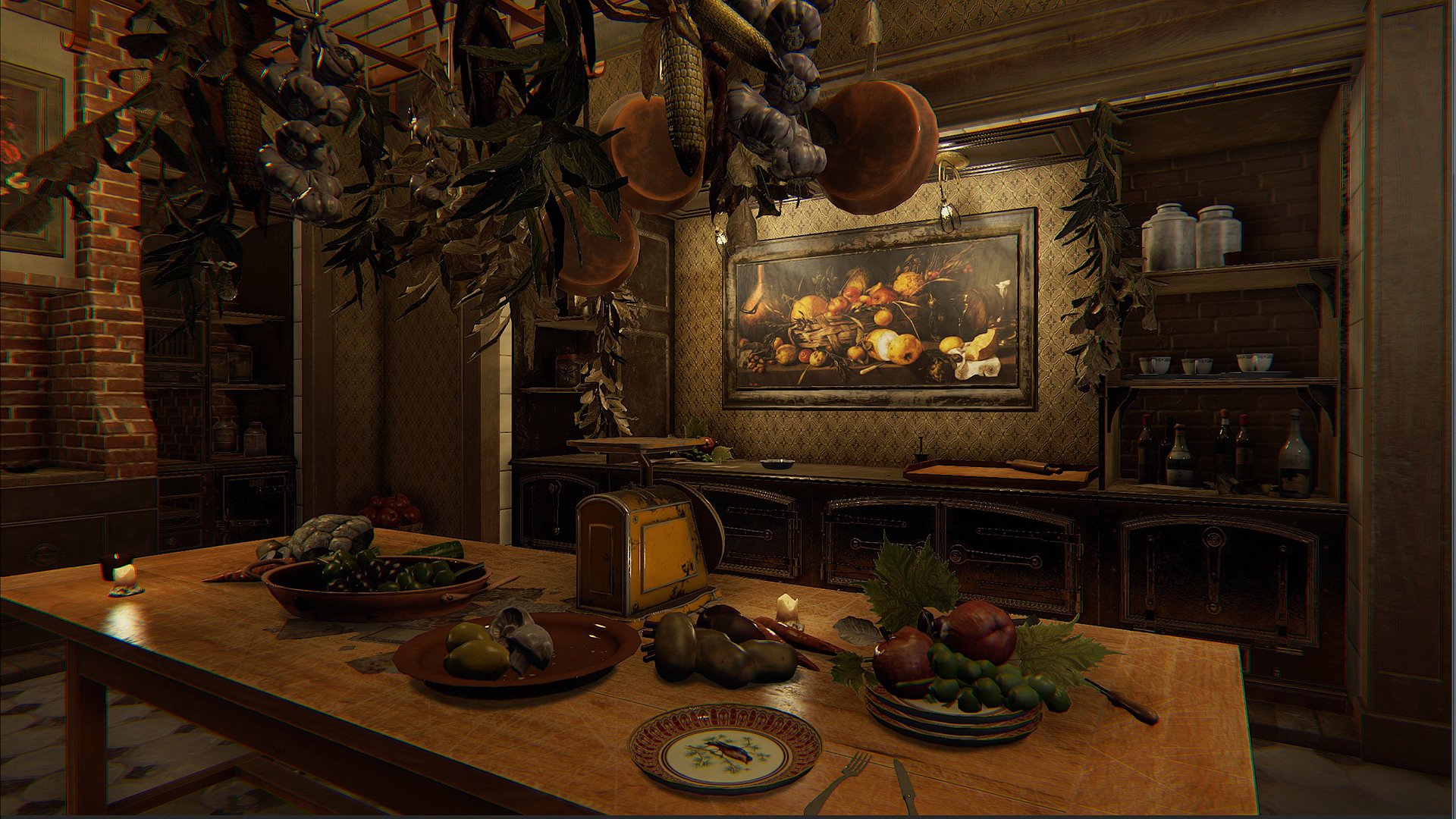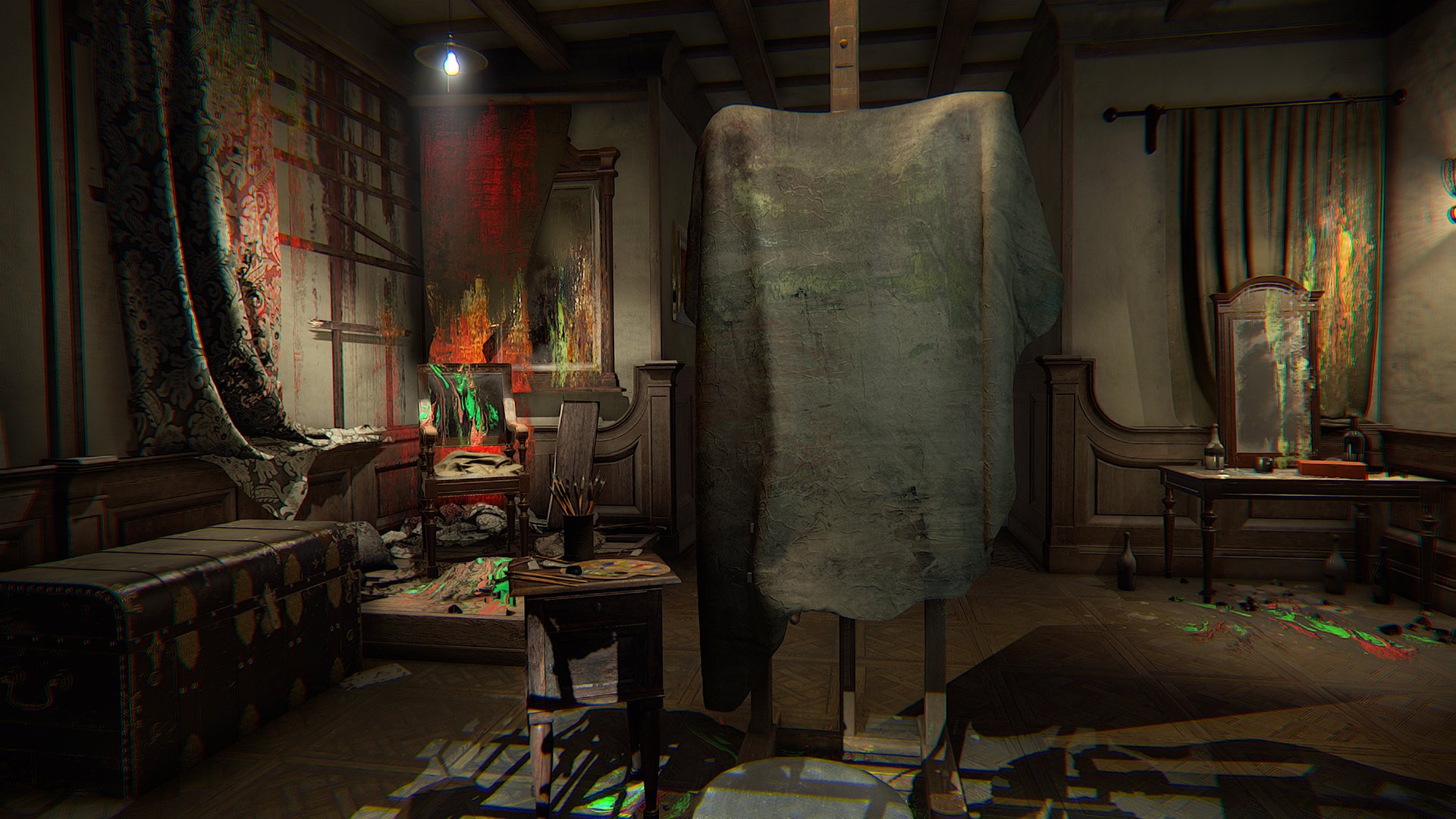Color me impressed.
P.T. is forever engraved in gamer lexicon, and it's amazing how a teaser for a game that didn't and will never actually release, can have such far-reaching influence on the landscape of horror games. Enter Layers of Fear, the latest and certainly not the last game that pulls direct influence from the bygone Kojima passion-project.
Honestly, we needed the bar to be raised for scares. We've had plenty of bad-to-mediocre fillers, such as Daylight, Among the Sleep, and of course Slender, which we must never forget, lest we're doomed to repeat it. And while Silent Hills never saw the light of day, we're in a better world, because it opened the door for games like Layers of Fear by Bloober Studios. While it may not capture the same terror, and there's an argument to be had that it shouldn't have tried, Layers has a lot of good things going for it, not the least of which is its ability to carefully craft terror in innovative ways.
It didn't start out this way. Playing a crazy painter wandering through a house, you can identify the pattern in about ten minutes. I was worried I would get tired of running into a dead end and turning around to find that something—or sometimes everything—has taken a sinister change. And while Layers does ardently stay glued and nailed to this formula, and all the gruesomeness that implies, the set pieces imagined up by the minds at Bloober never fail to impress.
In that same vein, Layers of Fear is a talking point in a broader argument about the nature of scripted games, particularly in the horror genre. In a time where procedural generation is all-the-rage, so much so that games are being criticized for not making use of the gimmick, the truth is that you just can't beat a well-imagined, well-thought-out level design.
You'll go through a room that melts and unmelts with the turning of a record player and a carousel in a child's room that gets more sinister with every turn (a set piece reminiscent of Paranormal Activity 3's wildly effective rotating fan camera). This creates an almost-constant thrill ride of scares that, even at their most predictable, can make your hairs stand on end.
Where Layers falls short is in presenting any real sense of danger. While it takes its antagonist directly from P.T., the game's inspiration that put the main character in constant peril even when doing something as simple as turning around, Layers takes a more restrained approach. And while the reduction of Slender Man-esque jump scares is a welcome subtraction, Bloober's game comes down to little more than "go the opposite way of wherever she is, and you'll be just fine."
The P.T. comparisons aren't simply surface-level. You walk through a constantly creepier home, unraveling details of a violent crime all the while being stalked by a faceless woman in a tattered robe who, if she catches you, will kill you instantly with an in-your-face jump-scare accompanied by a shrill shriek. The criticisms of this game as a walking simulator also can't easily be countered. Layers does have some semblance of what could be called "gameplay" in the form of the occasional find-the-combination puzzle, but these are few-and-far-between.
Another issue those puzzles present is that they often contain valuable information about the story, but since they are often optional, you can miss them completely and your experience will be spotty as a result. My first encounter with this was searching for the combination to a safe, but I walked through a door to find that it had closed a lock behind me (a phenomenon this game employs almost constantly and likely for practical reasons). Being a wise and savvy gamer, I had the bright idea to simply restart from my last checkpoint to get another crack at this elusive safe code, now armed with the knowledge of what doors will lock forever.
Layers doesn't have checkpoints, you say? The game is divided into six segments and it only saves at the end and beginning of each one, you say? Even though I was 70 percent of the way through that segment, I now have to re-do all of it to even have a chance to get the whole story, you say?
On the other hand, this can be seen as a positive, because it encourages subsequent playthroughs. I can buy that argument… to an extent. Even after finishing the game, I marveled at everything left to be discovered. Throughout Layers, you constantly update a journal with important pictures and letters you find, though not everything you find goes into the journal. But my journal wasn't even a quarter-filled by the end, despite what I would call excessive exploration.
That being said, the story itself seems to be lacking. You know going in that you play a crazy painter, and it's hinted early on that you committed some horrible crime involving your wife. This reminded me of the narrative structure of the movie Crimson Peak, where you suspect heavily that Tom Hiddleston and Jessica Chastain simply kill people and take their money, but it's implied that something even deeper is going on, come to find out that they're simply killing people and taking their money. Despite learning more about the struggles of this painter—he suffered a great loss that spiraled him into depression and alcoholism and made his paintings devolve in both quality and acceptance, culminating in several art critics declaring dead his once-great career—the story itself never progresses beyond the premise.
I also do wish to see less reliance on typical horror iconography. Plastic dolls aren't scary, and I won't be fooled into thinking they are, simply because I'm playing a horror game. In a game that has a lot of fresh ideas on how to build suspense and let your mind do most of the work, it's disappointing to see frequent usage of those tautologies (it's scary because it's scary).
That being said, a plastic baby doll in a cupboard shooting itself in the head with an 18th-century dueling pistol as you try to open said cupboard might indeed be disturbing, because, as Bloober reminds us, what horror game is complete without baby suicide?
-
Lots to discover
-
Amazing set pieces
-
Genuine scares
-
Questionable save system counters ability to explore
-
Weak, uninteresting story
-
Use of cheap horror icons
layers-of-fear
-
layers-of-fear #1

-
layers-of-fear #2

-
layers-of-fear #3

-
layers-of-fear #4








